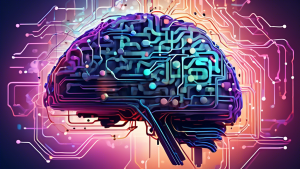Understanding LLM: What It Means and How It’s Used
In the ever-evolving landscape of technology and artificial intelligence, the term LLM has become increasingly prominent. Standing for Large Language Model, LLMs represent a fascinating leap in AI capabilities. But what exactly is an LLM, and how is it utilized in various fields? This article delves deep into understanding LLMs, their functionalities, and practical applications.
What is an LLM?
A Large Language Model (LLM) is a type of artificial intelligence model specifically designed for understanding and generating human-like text. These models are built using machine learning techniques and are trained on vast datasets containing text from the internet, books, articles, and other sources. The larger the dataset and the model, the more sophisticated its understanding and generation of text.
At its core, an LLM processes and predicts the next word or sequence in a given text. However, modern LLMs, such as OpenAI‘s GPT-3, have evolved to understand context, answer questions, translate languages, and even create coherent and contextually relevant long-form content.
How LLMs Work
The functionality of LLMs is grounded in few key concepts:
- Neural Networks: LLMs rely on neural networks, particularly deep learning architectures like transformers, to process and generate text. These networks consist of numerous layers that analyze different aspects of the input data.
- Training Data: The performance of an LLM heavily depends on the quantity and quality of the training data. These models learn language patterns, grammar, context, and much more by being exposed to diverse datasets.
- Parameters: Modern LLMs often have billions of parameters. These parameters represent the weights within the model that are adjusted during the training process to optimize performance and accuracy.
- Context Understanding: Advanced LLMs can retain context over longer texts. This ability enables them to generate more coherent responses that are contextually appropriate, spanning paragraphs and even entire articles.
Applications of LLMs
LLMs have a wide range of applications across various domains:
Natural Language Processing (NLP)
One of the primary uses of LLMs is in the field of Natural Language Processing. They enhance the capabilities of chatbots, virtual assistants, and customer service platforms by providing more accurate and contextually relevant responses.
Content Creation
LLMs are revolutionizing the content creation industry. They can assist writers by generating article drafts, brainstorming ideas, composing poetry, and even writing code. This capability speeds up the creative process and enhances productivity.
Translation Services
Machine translation has significantly improved with the advent of LLMs. Services like Google Translate leverage these models to provide more accurate and nuanced translations, bridging language barriers effectively.
Education and Research
In education, LLMs can be used for developing educational content, tutoring students, and conducting linguistic research. They assist in automating content delivery and personalizing learning experiences.
Healthcare
In the healthcare sector, LLMs are utilized to analyze medical records, provide diagnostic support, and even assist in creating detailed patient reports, thereby improving the efficiency and accuracy of healthcare professionals.
The Future of LLMs
The development of LLMs is still in its nascent stages, with continuous advancements being made. As these models become more sophisticated, their applications will expand further, possibly leading to new advancements in fields not yet considered.
However, ethical considerations and potential misuse of LLMs must be addressed. Issues like data privacy, biased outputs, and the spread of misinformation are critical challenges that developers and policymakers need to tackle proactively.
Conclusion
Large Language Models represent a significant leap in the field of artificial intelligence. Their ability to understand and generate human-like text opens a wide array of opportunities across various sectors. As technology continues to progress, the role of LLMs in shaping the future of AI-powered applications will undoubtedly grow, making our interaction with machines more seamless and intuitive.
For more detailed information on LLMs and their applications, you can visit resources like Wikipedia: Language Model or the OpenAI Research Page.






No comments! Be the first commenter?